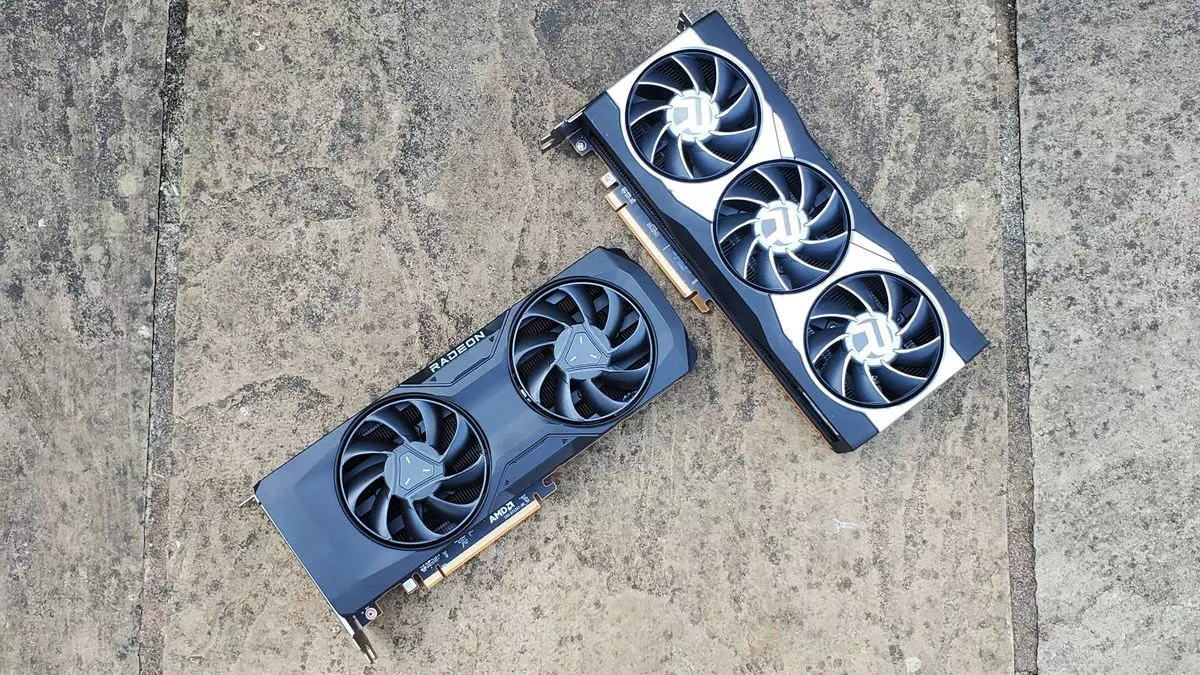AMD’s Fluid Motion Frames (AFMF) technology has recently made its debut in the gaming market. Initially, the support for this technology was limited to only two games, Forspoken and Immortals of Aveum. However, AMD’s commitment to enhancing the tech has led to the release of a preview driver that extends its support to a wider array of games.
According to the release notes of the driver, Fluid Motion Frames support is not only available on RX 7000-series GPUs, but also on any RX 6000-series GPU. More significantly, AMD now claims that this technology will work with any DirectX 11 or DirectX 12 game. This is an exciting development as it means AMD users can benefit from improved performance in almost any game released over the past decade or more. Additionally, Fluid Motion Frames can even be enabled on competing GPUs, including the popular GTX 1060. This compatibility could inadvertently discourage users from upgrading their hardware, as they can experience the benefits of this technology without purchasing new GPUs.
Fluid Motion Frames is an integral part of AMD’s frame generation technology, known as FSR 3. It is specifically designed to enhance frame rates in games, particularly in scenarios with high resolutions or demanding ray tracing settings. For a comprehensive understanding of FSR 3 upscaling and Fluid Motion Frames, it is recommended to refer to Jeremy’s informative overview. The broad support for Fluid Motion Frames stands in stark contrast to Nvidia’s DLSS 3 technology, which requires individual game support and exclusive hardware acceleration features available only on RTX 40-series GPUs. Whether Nvidia can adapt its frame generation technology to run on older GPUs remains uncertain, considering its specific hardware requirements.
Although AFMF and frame generation technology in general provide remarkable benefits, there are certain limitations to be mindful of. One significant drawback is the increase in latencies caused by frame generation. In response to this concern, AMD has implemented Anti-Lag+ technology, a revised version aimed at reducing latencies. However, it is important to note that AFMF is not recommended when frame rates are already low, as frame generation can exacerbate high latencies. According to AMD’s recommendations, AFMF should only be enabled for games that maintain a minimum frame rate of 55 FPS for 1080p displays and 70 FPS for 1440p or higher resolution displays.
It is worth mentioning that the current driver release is defined as a Technical Preview, indicating that it is not yet ready for a broader public release. However, for gamers who enjoy tinkering with their GPU settings and are willing to navigate a few bugs, this driver offers a promising glimpse into the future of gaming technology. AMD’s dedication to refining their frame generation technology demonstrates their commitment to providing enhanced gaming experiences for their users.
AMD’s Fluid Motion Frames technology has made significant strides in expanding its support and compatibility. By extending its coverage to a wide range of DirectX 11 and DirectX 12 games, AMD users can now experience improved performance in various titles, even on competing GPUs. While there are considerations and recommendations to bear in mind, the technological advancements showcased in this preview driver highlight the potential of frame generation technology in the gaming industry. As AMD continues to refine and optimize its Fluid Motion Frames technology, gamers can look forward to more immersive and seamless gaming experiences in the future.


Leave a Reply